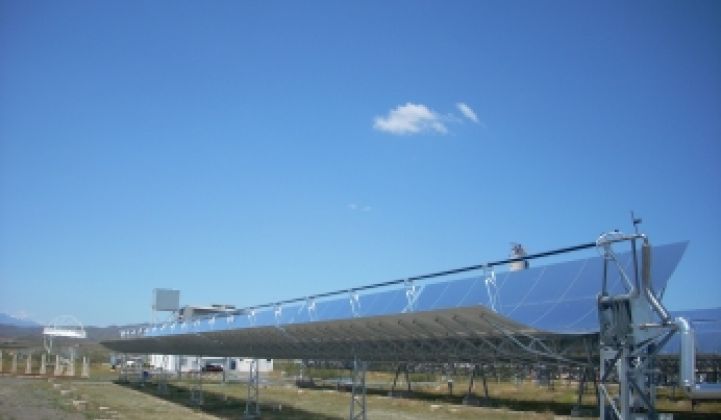In Hawaii, a power developer will soon find out if earth and sky mix.
Pacific Light & Power will build a 10-megawatt solar thermal plant that will combine a trough solar collector from Spain's Albiasa with a turbine traditionally used in geothermal systems.
Why? Ten megawatts is unusually small for a solar thermal field. BrightSource Energy, by contrast, wants to build one in California that will produce 396 megawatts of power. Most solar thermal systems, however, collect heat from the sun to turn water into steam and then feed the steam into gigantic turbines. The heat requirements and the size of the solar thermal fields mean that solar thermal parks can only be built economically in places like North Africa or Arizona where the sun shines almost every day of the year, lots of empty land exists, and humidity remains almost nonexistent. Even the presence of a few clouds can depress the power output.
Geothermal turbines swap water and steam for organic fluids like butane, which turn to vapor at lower temperatures. Thus, geothermal turbines require less heat, which in turn allows for smaller solar fields in a wider range of climates and geographies. Like traditional solar thermal systems, excess heat can be stored and run through the system in the evening or when cloud cover descends.
Jesse Tippett, the managing director of Albiasa, likens it to thin-film solar panels. The underlying technology may not be as efficient but it can generate energy in a wider variety of circumstances.
When completed in 2011, the plant -- located on the island of Kauai -- will provide close to seven percent of the power needed on the island.
Alibasa and PLP describe it as a hybrid plant, but it's more of an unusual concatenation. Generally, hybrid plants are power plants that combine renewable energy generation -- like solar thermal systems or biogas burners -- with gas turbines to provide more baseline-like power. Florida Power and Light and Abengoa are currently building hybrid plants.
Power from the plant will be "close to Hawaiian (grid) parity," he said, which means expensive. Electric power in Hawaii costs around 25.78 cents a kilowatt hour, the highest rate in the U.S., according to the Energy Information Administration. Hawaii generates most of its power from diesel generators. But Albiasa will study ways to bring the cost down to make these systems feasible elsewhere.



